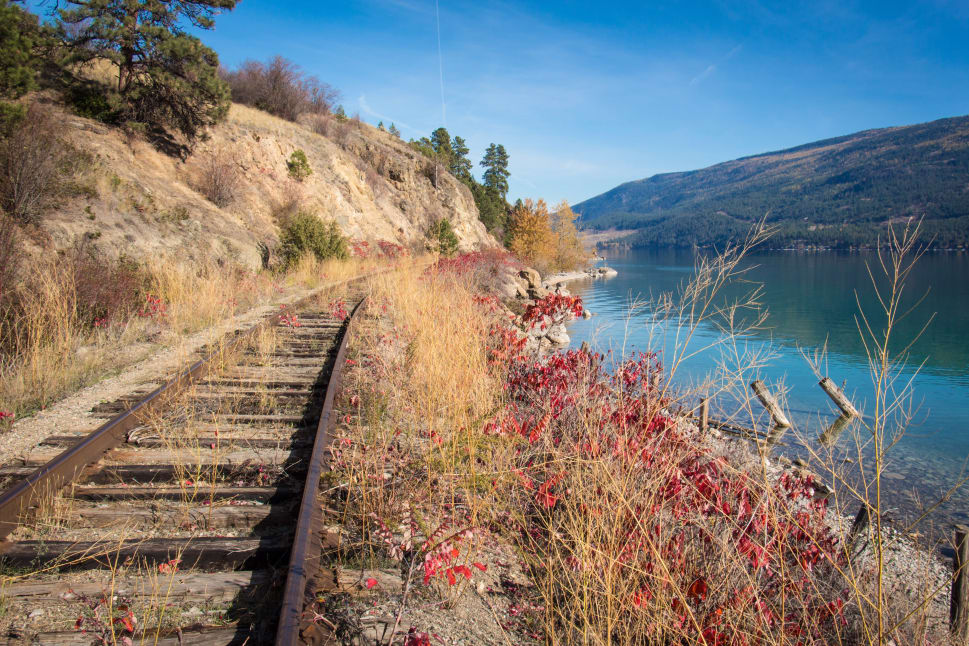Introduction
Kelowna's journey from a quiet orchard town to a thriving city is a story of transformation, where steel tracks laid the groundwork for progress. The arrival of the railway in Kelowna not only changed the landscape but also reshaped the city's economic and social fabric. Here we explore the history of railways in Kelowna and how these iron pathways became the engines driving the city's growth and leaving an indelible mark on its identity.
Historical Overview of Railways in Kelowna
The Beginning and the CN Railway Station
The Canadian National (CN) Railway Station in Kelowna, built in 1926, stands as a reminder of the pivotal role of railways in the city's development. Railways were crucial in British Columbia's decision to join the Canadian confederation, and Kelowna's CN Station encapsulates this historical significance. The establishment of the station heralded a new era for Kelowna, marking its emergence as a notable city within the national landscape. Its construction symbolized progress and potential, putting Kelowna firmly on the map.
The Economic Necessity
Prior to the railway, Kelowna's growth was hindered by the limitations of lake transport. The arrival of the CN Railway transformed the city's economy, offering a more efficient and reliable alternative to water-based transportation. The railway provided a much-needed link to the provincial and national networks, catalyzing the development of local industries, particularly in fruit and vegetable shipping.
Economic and Social Impact
Economic Transformation
The railway era ushered in a significant economic shift in Kelowna. From a reliance on water transport, the city moved towards a more robust, land-based economic framework. This change particularly benefited the fruit and vegetable shippers, who previously struggled with the challenges of perishable goods transportation. The railway enabled faster and more efficient delivery to markets, enhancing the city's agricultural prowess.
Social Changes
The railway also had a profound social impact. The industrial district of Kelowna moved from the waterfront to the North End, driven by the need to be closer to the rail line. This relocation led to the development of new industrial facilities, including packing houses and canneries, reshaping the urban landscape and altering the social dynamics of the city.
The Decline of Railway Transportation
The prominence of railways in Kelowna began to wane with the rise of automobiles and other modes of transportation. The completion of major highways and bridges made road travel more convenient, leading to a decline in railway usage. By 1967, passenger services on the Kelowna-Kamloops line ceased, and the focus shifted to freight and express depot functions.
Remnants of the Railway Era in Present-Day Kelowna
The CN Railway Station Today
Today, the CN Railway Station, converted into a popular pub, stands as a historical monument. It retains its original architectural charm, serving as a vivid reminder of Kelowna's railway era. The station's preservation and heritage designation underscore its significance in the city's history.
Impact on Kelowna's Landscape
The railway era's influence is still visible in Kelowna’s urban development. The North End, once Kelowna's industrial activity due to its proximity to the railway, remains a key area in the city's landscape. The railway's legacy continues to be a part of Kelowna’s evolving story.
Conclusion
The railway era in Kelowna was a period of significant transformation. It played a crucial role in shaping the city’s economic and social landscape, laying the tracks for its journey towards modernity. Today, as we walk through Kelowna, the echoes of the railway era remind us of the tracks that once shaped a city and the enduring legacy they left behind.





